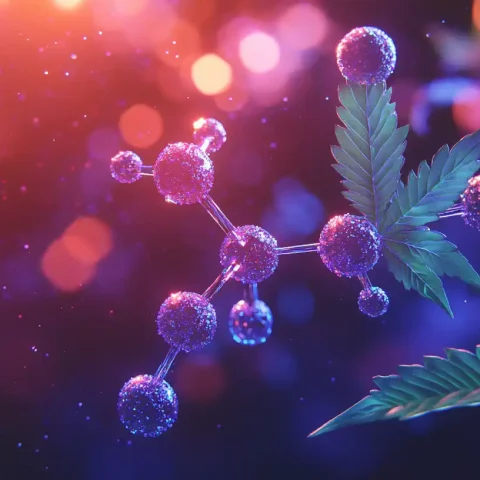- Understanding tresconol effects, risks & legal status in global markets
Tresconol Unveiled: The Essential Guide to This Powerful Synthetic Cannabinoid

Contents
Contents
Introduction: Tresconol
In the dynamic realm of synthetic cannabinoids, new compounds frequently emerge, often with little more than a nickname to distinguish them. Take “Tresconol,” for instance—a name currently making the rounds, stirring curiosity about its effects and potential uses. Yet here’s the catch: as of now, “Tresconol” doesn’t appear in any recognized scientific literature, leaving its identity and safety shrouded in mystery.
Synthetic cannabinoids, such as the newly surfaced “Tresconol,” are crafted to imitate the effects of THC, the key psychoactive compound in cannabis. While these substances aim to interact with the body’s endocannabinoid system in a similar way, their effects can be highly unpredictable. Without concrete data on “Tresconol’s” chemical makeup or safety, it’s another example of how little is often known about the risks associated with synthetic alternatives. This uncertainty underscores the need for caution and further study in understanding their potential impact.
For now, “Tresconol” remains speculative, but its rise highlights the broader conversation about synthetic cannabinoids: what we know, what we don’t, and the pressing need for clarity in this rapidly evolving field. Let’s explore the basics of synthetic cannabinoids and reflect on the possible implications of “Tresconol” as it (perhaps) takes its place in the spotlight.
Decoding Tresconol’s Chemical Blueprint
Synthetic cannabinoids are designed to mimic the natural cannabinoids found in the cannabis plant, such as THC and CBD. While it has been suggested that a compound like “Tresconol” may exist, there is no official chemical blueprint for it in scientific databases.
What is generally known about synthetic cannabinoids is that they often feature a variety of molecular structures, some based on indole cores, which can impact how they bind to the body’s cannabinoid receptors (CB1 and CB2). Common synthetic cannabinoids include compounds like JWH-018 and HU-210, which are known to be significantly more potent than THC. These cannabinoids are also lipophilic, meaning they dissolve easily in fats and oils, affecting how they are absorbed and metabolized by the body.
The unknown nature of “Tresconol” means it’s crucial to exercise caution when encountering new synthetic compounds, especially given the wide variability in their chemical properties.
Potential and Risks of Synthetic Cannabinoids
Synthetic cannabinoids have been marketed both for recreational use and as potential therapeutic agents, although their safety and efficacy remain highly contested. While some synthetic cannabinoids are being explored for their possible applications in pain management or reducing inflammation, these uses are mostly speculative at this stage.
Synthetic cannabinoids have been linked to some beneficial effects in preliminary studies, such as:
- Pain relief: Some studies suggest certain synthetic cannabinoids could provide pain relief, similar to THC.
- Anti-inflammatory properties: Synthetic cannabinoids may modulate immune responses, but this is still under investigation.
- Neurological disorders: Preclinical studies have explored synthetic cannabinoids for treating conditions like epilepsy, but human trials are lacking.
However, synthetic cannabinoids also come with significant risks:
- Unpredictable effects: Unlike THC, synthetic cannabinoids often vary widely in potency, leading to unpredictable and sometimes dangerous effects.
- Potential for abuse: Synthetic cannabinoids have a high risk of addiction and abuse, particularly those that are unregulated and sold in illicit markets.
Until more is known about synthetic cannabinoids like “Tresconol,” it is vital to prioritize safety and be wary of unproven claims.
How Synthetic Cannabinoids Work: Interactions with the Endocannabinoid System
Synthetic cannabinoids, like THC, work by interacting with the endocannabinoid system, which regulates a variety of physiological processes. Most synthetic cannabinoids are designed to bind to the CB1 receptors found in the brain and central nervous system, which mediate the psychoactive effects of cannabis.
It is believed that synthetic cannabinoids, including those potentially like “Tresconol,” act as agonists at CB1 and CB2 receptors, though they may bind more strongly and last longer than THC. This can lead to much more intense effects, including euphoria, altered perception, and relaxation. However, stronger binding affinity also increases the risk of adverse effects, such as anxiety, paranoia, and increased heart rate.
Further research is needed to fully understand the pharmacodynamics and pharmacokinetics of synthetic cannabinoids and their potential long-term impacts on health.
The Legal Landscape of Synthetic Cannabinoids
The legal status of synthetic cannabinoids is complex and varies widely by country. In the United States, for instance, many synthetic cannabinoids have been classified as Schedule I controlled substances, making them illegal under federal law. However, compounds not specifically listed may fall under the Federal Analogue Act, which treats substances with similar chemical structures to illegal drugs as controlled substances if they are intended for human consumption.
In the European Union, synthetic cannabinoids are often regulated under the New Psychoactive Substances (NPS) framework, though specific countries may impose their own restrictions or bans. For example, many EU countries have banned compounds similar to K2 or Spice, the most well-known synthetic cannabinoids.
Whether or not a compound like “Tresconol” would fall under existing regulations depends on its exact chemical composition and intended use. As synthetic cannabinoids continue to emerge, laws will likely evolve to cover newly created substances.
Risks and Side Effects of Synthetic Cannabinoids
The risks associated with synthetic cannabinoids are significant. Users have reported a range of adverse effects, some of which are far more severe than those typically associated with natural THC.
Short-term risks:
- Anxiety and paranoia: Synthetic cannabinoids are known to cause heightened anxiety and paranoia, particularly at high doses.
- Tachycardia and hypertension: These substances can lead to increased heart rates and blood pressure, posing risks for individuals with cardiovascular issues.
- Nausea and vomiting: Users often report gastrointestinal distress, including nausea and vomiting.
Long-term risks:
- Addiction: Synthetic cannabinoids are highly addictive and may lead to dependence.
- Cognitive impairment: Long-term use could impair memory and cognitive function, though more research is needed.
- Psychiatric conditions: There is concern that synthetic cannabinoids may exacerbate or trigger mental health disorders, such as psychosis or depression.
Given the unpredictable effects and limited research on substances like “Tresconol,” users should approach these compounds with caution.
The Synthetic Cannabinoid Market and Its Hazards
The market for synthetic cannabinoids is largely driven by the demand for legal alternatives to THC. Compounds like K2 and Spice have proliferated due to their perceived legality, though most are now banned in many jurisdictions. Synthetic cannabinoids are often sold online as “research chemicals” or under vague brand names, which makes regulation and quality control difficult.
Products sold as synthetic cannabinoids are often inconsistent in purity and potency. In many cases, batches may be contaminated with other dangerous substances, increasing the risks for users. Furthermore, the lack of regulation means that the actual contents of synthetic cannabinoid products can vary significantly, even from batch to batch.
The future of synthetic cannabinoid markets will depend heavily on regulatory responses and public awareness of the dangers associated with these compounds.
Frequently Asked Questions About Synthetic Cannabinoids and Tresconol
1. What is Tresconol and how does it relate to synthetic cannabinoids?
Tresconol is a reportedly new synthetic cannabinoid that has recently emerged in the market. However, it’s important to note that “Tresconol” is not officially recognized in scientific literature, and its exact chemical structure and nature remain ambiguous. It belongs to the broader category of synthetic cannabinoids, which are laboratory-created chemicals designed to mimic THC’s effects.
2. How do synthetic cannabinoids work in the body?
Synthetic cannabinoids interact with the body’s endocannabinoid system, primarily binding to CB1 and CB2 receptors. They typically act as agonists at these receptors, often binding more strongly and lasting longer than natural THC. This interaction affects various physiological processes and can produce effects like euphoria, altered perception, and relaxation.
3. What are the immediate risks and side effects of synthetic cannabinoids?
Common short-term risks include:
- Severe anxiety and paranoia
- Tachycardia (increased heart rate)
- Hypertension (high blood pressure)
- Nausea and vomiting
- Unpredictable and potentially dangerous effects due to varying potency
4. What are the potential long-term consequences of synthetic cannabinoid use?
Long-term risks include:
- Addiction and physical dependence
- Cognitive impairment affecting memory and mental function
- Potential development or exacerbation of psychiatric conditions
- Possible trigger for psychosis or depression
5. What is the legal status of synthetic cannabinoids?
The legal status varies by country and jurisdiction. In the United States, many synthetic cannabinoids are classified as Schedule I controlled substances. In the European Union, they are often regulated under the New Psychoactive Substances (NPS) framework. New compounds may fall under analog laws that treat them similarly to already-banned substances.
6. Are there any legitimate medical applications for synthetic cannabinoids?
While some synthetic cannabinoids are being explored for potential therapeutic uses such as:
- Pain management
- Anti-inflammatory properties
- Treatment of neurological disorders
Most applications remain speculative, and current research is limited. Any potential benefits are overshadowed by significant risks.
7. Why are synthetic cannabinoids considered more dangerous than natural cannabis?
Synthetic cannabinoids are considered more dangerous because:
- They often have unpredictable potency levels
- Their effects can be significantly stronger than natural THC
- Product quality and contents are inconsistent
- They lack quality control and regulation
- They may be contaminated with other dangerous substances
8. How can synthetic cannabinoids be identified in the market?
Synthetic cannabinoids are often sold:
- As “research chemicals”
- Under vague brand names
- Through online markets
- With inconsistent labeling and packaging
However, it’s important to note that visual identification is unreliable due to frequent changes in packaging and formulation.
9. What should someone do if they experience adverse effects from synthetic cannabinoids?
If someone experiences adverse effects, they should:
- Seek immediate medical attention
- Be honest with healthcare providers about what was consumed
- Report any unusual symptoms
- Avoid using the substance again
10. How can people stay informed about new synthetic cannabinoids and their risks?
To stay informed:
- Consult reliable medical and scientific sources
- Follow updates from drug monitoring organizations
- Pay attention to public health warnings
- Avoid relying on user reports or unofficial sources
- Consult with healthcare professionals for accurate information
Conclusion: The Importance of Caution with Synthetic Cannabinoids
Synthetic cannabinoids represent a rapidly evolving and dangerous area of drug development. While they may offer some intriguing potential in therapeutic settings, the risks far outweigh the benefits at present, particularly given the lack of research and regulation. Whether or not “Tresconol” is a legitimate substance, it’s clear that the world of synthetic cannabinoids is fraught with risks, and consumers should be wary of unregulated and untested compounds.
The journey into understanding these substances has only begun, but for now, safety should be the top priority.
Don’t miss out on essential information about emerging substances like Tresconol. Stay informed and stay safe. Subscribe to our newsletter for the latest updates on drug research, legal developments, and harm reduction strategies. Your health and well-being are worth it.
This article and all content on this website are intended solely for educational and informational purposes. The information presented here is based on publicly available sources and our own research and should not be considered as medical, legal, or professional advice. We do not support, condone, or promote the use of synthetic substances, or any illegal activity. Always consult with a qualified healthcare provider or legal professional before making any decisions related to synthetic cannabinoids or other controlled substances. We strive for accuracy and responsibility in our content and encourage readers to independently verify any information. For more details, please refer to our full Disclaimer.




